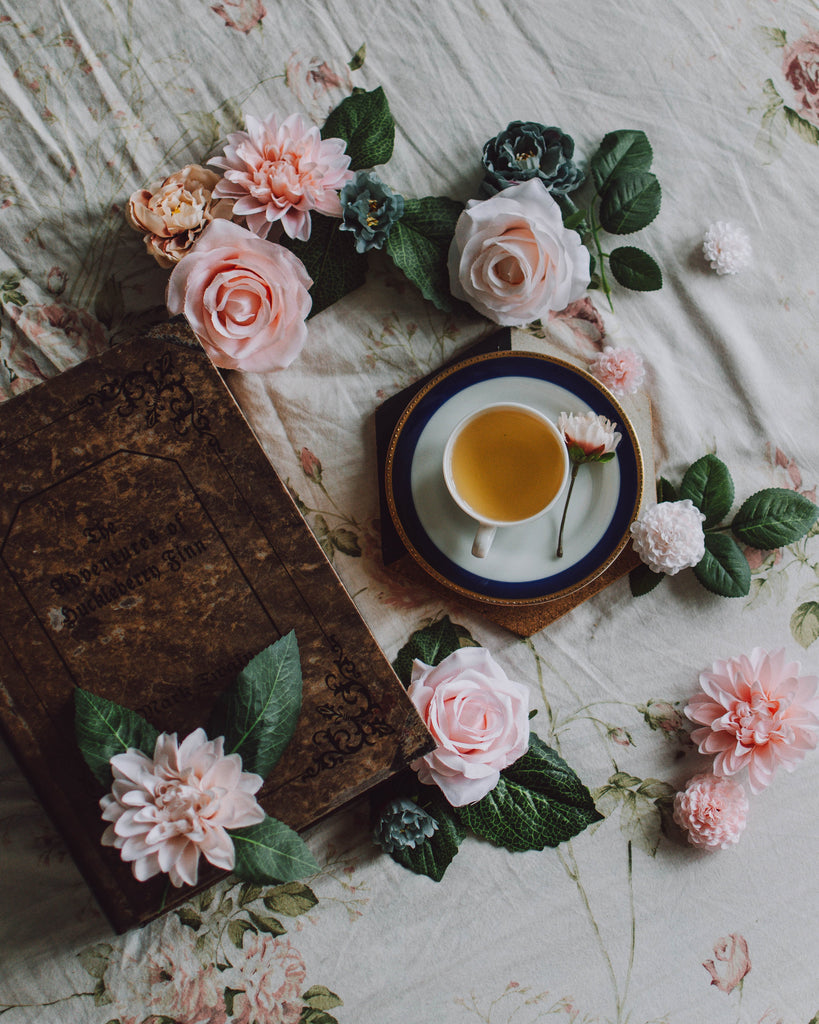THE HISTORY OF TEA
The history of tea begins with a blend of myth and fact as the earliest known record of tea originates in ancient China where the divine farmer Shennong discovered it. During a day spent exploring the forest in search of edible nuts and berries, Shennong accidentally poisoned himself 72 times. But, before the venom from the poisonous grains could end his life, the wind blew a small leaf into his mouth. Desperate, Shennong chewed on the leaf and its properties revived him, and as the legend goes this is how we discovered tea. And, although we know tea doesn't cure poisonings, this legend truly pays homage to how for centuries tea has helped restore our physical well-being.
The Chinese tea plant from the legend of Shennong is the same tea plant that is still cultivated around the globe today, however it was originally consumed very differently. In ancient China the tea leaf was cooked with grain porridge or consumed alone as a vegetable. Nevertheless, based on archaeological evidence, tea shifted from food to drink 1,500 years ago once civilization realized that infusing the leaf with warm liquid could create an intense variety of delightful flavors. The standard preparation of tea at that time became warming the leaf, packaging it into convenient cakes, crumbling it into a powder, and combining with hot water to create a beverage now known as matcha. During the 9th century, a Japanese monk brought the first tea plant from China to Japan which subsequently introduced matcha into Japanese culture and eventually led to the creation of the Japanese tea ceremony. Then, during the 14th century, the Chinese emperor Hongwu of the Ming Dynasty banned the manufacturing of tea bricks and shifted the standard to loose leaf tea.
GET $5 OFF TODAY WITH CODE “5OFF”
During the 17th century Dutch traders brought loose leaf tea to Europe and during this time Queen Catherine of Braganza popularized tea with the English aristocracy when she married King Charles II. And, as Great Britain expanded its influence around the world, the world's interest in tea grew with it. By the 18th century, loose leaf tea sold for almost ten times the price of coffee and the plant was still only cultivated and exported from China. At first, British East India Company paid for Chinese tea with silver but as prices grew the British began trading tea for opium. This trade provoked an incredibly severe public health crisis within China as people became addicted to opium which eventually led to the deadly Opium wars between the two nations ultimately weakening China’s global influence for a century.
Despite the British East India Company’s monopoly on tea trade, China continued to be the primary source of tea around the world, therefore; the British commissioned botanist Robert Fortune to smuggle tea and experienced tea workers into India while disguised as a Chinese merchant. This introduction of tea into India spread around the globe and resulted in tea’s exponential growth as an everyday commodity. Furthermore, as the Boston Tea Act, which allowed the British East India Company, to ship tea duty-free directly to the colonists while excluding the colonial merchants, directly prompted the Boston Tea Party in 1773 as colonists protested England's high taxes, tea drinking played a significant role in American social life as well. And, as the popularity of tea continued to grow, new tea traditions also developed which led to the creation of tea bags as well as the introduction of ice tea and blooming flower teas!
Today, tea is the second most consumed beverage in the world after water, and at the Qi we will continue to promote the power of flower teas to heal our bodies and the world.






















